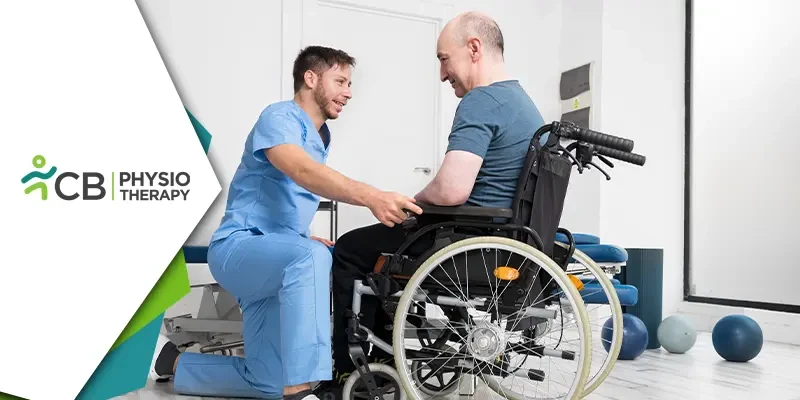Flaccid paralysis, a condition characterized by the loss of muscle tone and voluntary movement due to damage in the peripheral nervous system, can be a devastating diagnosis for patients. It can result from various causes, such as spinal cord injuries, peripheral nerve damage, or certain medical conditions. While traditional physiotherapy methods have proven effective in managing flaccid paralysis to some extent, advances in the field are opening up new avenues for more targeted and innovative treatment approaches, that help to regain strength and mobility.
Understanding Flaccid Paralysis:
Flaccid paralysis occurs when the motor neurons responsible for transmitting signals from the brain to muscles are damaged or disrupted. This disruption can lead to a lack of muscle activation, weakness, and even loss of reflexes. The impact of flaccid paralysis can vary depending on the extent and location of nerve damage. Patients with this condition often experience difficulty performing everyday tasks, a decrease in muscle mass, and the potential for joint contractures due to immobility.
Conventional Physiotherapy Approaches:
Traditional physiotherapy techniques have long been employed to address flaccid paralysis. These approaches focus on maintaining joint range of motion, preventing muscle atrophy, and promoting circulation. Range of motion exercises, passive stretching, and gentle mobilization are commonly used to prevent joint contractures and maintain the flexibility of muscles and tendons.However, these methods may fall short of addressing the underlying neural damage and restoring functional movement. This has prompted researchers and physiotherapists to explore more advanced techniques that can directly target neuroplasticity—the brain's ability to reorganize and adapt in response to injury.
Neuroplasticity and Advanced Physiotherapy:
Neuroplasticity lies at the heart of modern advancements in physiotherapy for flaccid paralysis. This phenomenon offers hope by indicating that the brain can create new neural pathways, allowing patients to regain some lost function. Advanced physiotherapy treatments capitalize on this potential, facilitating the rewiring of neural circuits and aiding in functional recovery.Functional Electrical Stimulation (FES):
FES involves the application of electrical currents to paralyzed muscles to generate contractions. This technique not only prevents muscle atrophy but also encourages neural pathways to reactivate, fostering muscle re-education. FES can be used to assist with walking, gripping objects, and even bladder control. By repeatedly activating muscles, the brain learns to regain control over them, improving the overall quality of life for patients.Task-Specific Training:
Task-specific training involves practicing specific tasks repeatedly to rewire neural connections. This approach focuses on meaningful activities that the patient wishes to regain, like reaching for objects, standing, or walking. The principle behind this therapy is that repetition and targeted training can lead to the formation of new neural pathways, bypassing damaged areas and restoring movement to a certain degree.Virtual Reality (VR) and Gaming:
Incorporating technology such as virtual reality and gaming into physiotherapy can engage and motivate patients while promoting neuroplasticity. VR systems create immersive environments that encourage patients to perform tasks they may have thought impossible due to their paralysis. These activities stimulate the brain and promote motor relearning, making rehabilitation both effective and enjoyable.Constraint-Induced Movement Therapy (CIMT):
CIMT involves restraining the unaffected limb while intensely training the affected limb. By limiting the use of the functional limb, patients are compelled to use the weakened limb, stimulating neural pathways and gradually improving its strength and control. This method challenges the brain to adapt and rewire, promoting functional recovery.Neuromuscular Electrical Stimulation (NMES):
NMES targets specific muscles with controlled electrical impulses, promoting muscle contraction and improving strength. It also aids in preventing muscle atrophy and supports functional re-education of the affected muscles. NMES is particularly valuable when combined with traditional physiotherapy exercises, enhancing the overall treatment outcomes.While these advanced physiotherapy techniques offer promising results, it's important to note that flaccid paralysis is a complex condition, and recovery can vary from person to person. Additionally, the success of these approaches may depend on factors such as the severity of the paralysis, the patient's dedication, and the expertise of the physiotherapist.
As technology continues to evolve and our understanding of neuroplasticity deepens, the potential for developing even more innovative treatments for flaccid paralysis remains high. Advanced physiotherapy treatment for patients with flaccid paralysis is paving the way for a more hopeful future. These approaches not only aid in preventing secondary complications but also tap into the brain's remarkable ability to adapt and heal.

